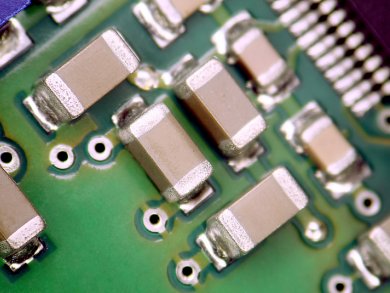Jeremy Levy and colleagues, University of Pittsburgh, USA, have developed a transistor with a central component that operates with the addition of only one or two electrons. This SketchSET — which is the first single-electron transistor made entirely of oxide-based materials — consists of an island formation that can house up to two electrons. The number of electrons can be controlled by using bottom- and side-gate electrodes or, in the absence of external power, ferroelectricity which allows the transistor to act as a solid-state memory.
The transistor was created by using the tip of an atomic force microscope probe to sketch the single-electron transistor at the interface of a strontium titanate crystal and lanthanum aluminate layer. The electronic devices can then be erased and the interface used anew.
This type of transistor could be applied to a range of computational applications, from ultradense memories to quantum processors. The 1.5 nm central island could also be used as an artificial atom for developing new classes of artificial electronic materials.
- Sketched oxide single-electron transistor
G. Cheng, P. F. Siles, F. Bi, C. Cen, D. F. Bogorin et al.,
Nature Nanotechnol. 2011.
DOI: 10.1038/nnano.2011.56




